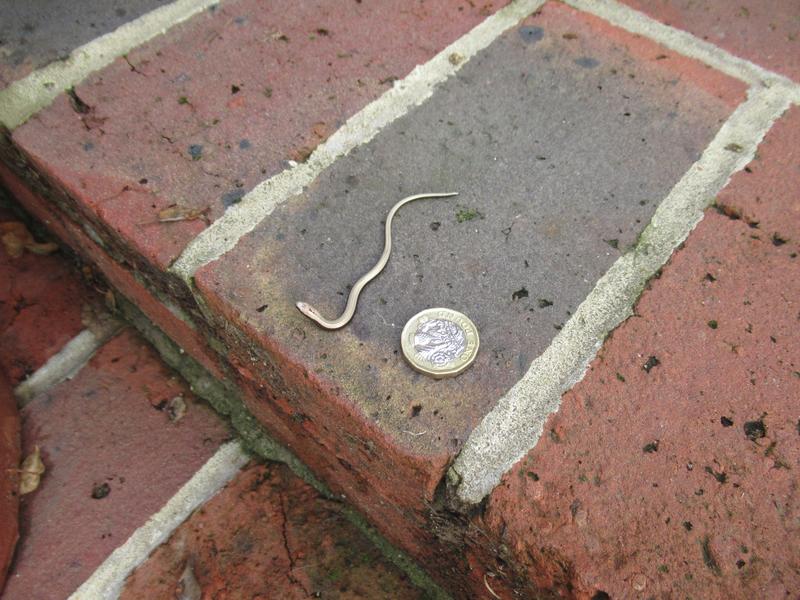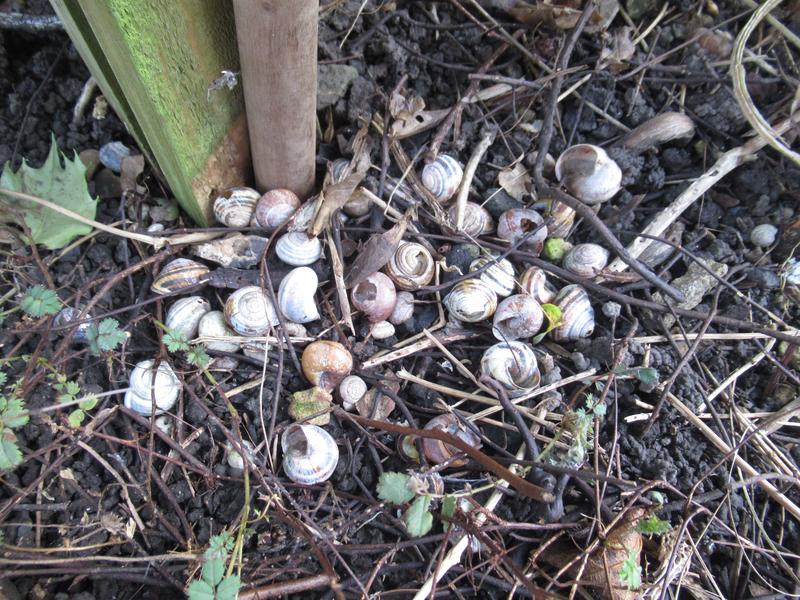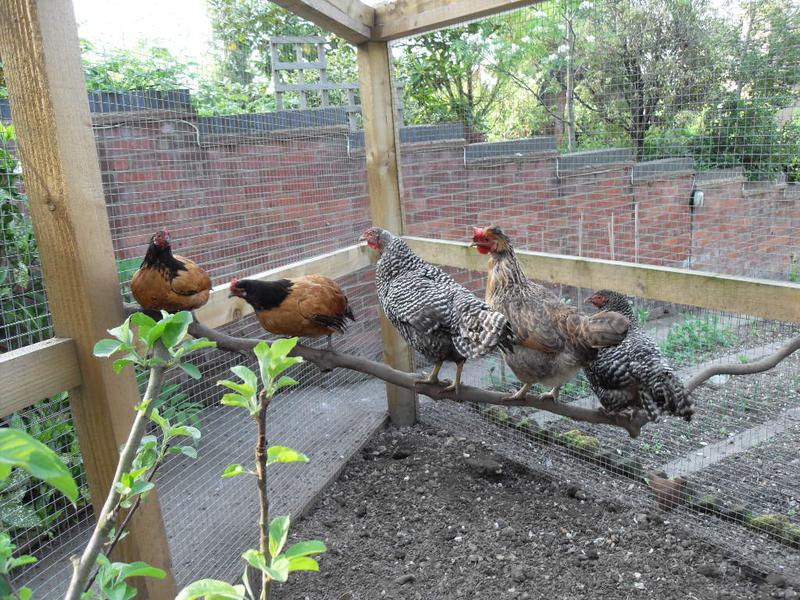We have always had a thriving population of slow worms in our garden at this address. Slow worms have their young from March to September. We see babies from March through to September. Through out the year from March onwards we see baby slow worms, medium sized slow worms through to large adult slow worms.
This indicates that we have a thriving, breeding, population which is lovely. I thought that I knew pretty much all there was to know about slow worms but I have just discovered something new to me about them.

I took this photo mid September but didn’t get round to using it. I put the pound coin next to it for size comparison.

Just recently we noticed this collection of in tact but empty snail shells. At first we assumed it must be caused by a bird. I started researching if birds leave empty shells in one place like this and couldn’t come up with anything. I then researched possible causes of a collection of empty snail shells in one spot.
Much to my surprise it is a habit of slow worms. Slow worms feed on snails, small slugs, worms and insects. The interesting thing is that they suck the snails out of their shells without damaging them and they leave the shells in a pile in a favourite spot.
As we know that we have a thriving population of slow worms in the garden this must be the cause of the collections of empty snail shells. This is fascinating and I am amazed that I have only just learned of this. You live and learn!

 Click here to see the history of my flock.
Click here to see the history of my flock.
I never thought I could feel sorry for a snail but being sucked out of their shells sounds terrifying!! xx
You know what, I feel just the same. I love slow worms but the thought of them sucking snails out of their shells is horrible. There was a photo on line and the slow worm had it’s jaws around the snail much like a snake, ready I assume, to suck. Yuck! xx
How lovely that you can keep track of them,and learn about them.
I love that we see babies as well as adults every year because it shows that they are doing very well here.
That is fascinating. Thankyou for sharing.
I wasn’t sure at first but then I thought it is always interesting to find out new things about the the creatures around us.